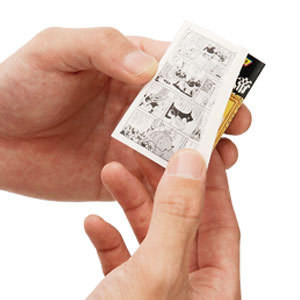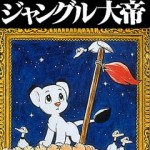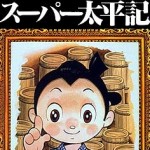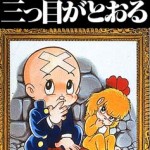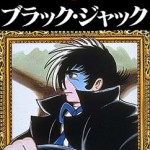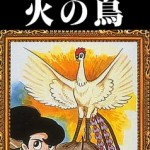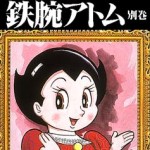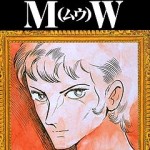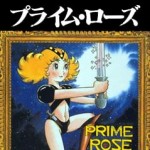Osamu Tezuka Complete Manga Works
Also known as 手塚治虫漫画全集 (Tezuka Osamu Manga Zenshuu)
In 1977 Kodansha approached Osamu Tezuka with a proposal to publish a complete library of nearly all his manga works. Although Tezuka was at first resistant to the idea (after all, it had been tried before and failed), Kodansha was insistent.
By some estimates, it would take you 145 hours 38 minutes to read the entire set… with no breaks!”
And so, published over a twenty-year period, from 1977-97, the Osamu Tezuka Complete Manga Works (tezuka osamu manga zenshū) edition by Kodansha has become the de facto standard in cataloging roughly 80,000 of the estimated 150,000 pages of manga produced by Tezuka during his lifetime. Although this 400-volume set is very comprehensive, it unfortunately does not include all his manga stories. Some of the notable exceptions include Cyrano, the Hero (1953), as well as Tezuka’s take on the Walt Disney classics Pinocchio (1952) and Bambi (1951).
Published in the Japanese B6 size (12.8 × 18.2 cm or 5.04″ × 7.17″), the set was released in four phases of 100 volumes each. Although numbered, they were not released strictly in sequential order. As such, Phase I (for example) does not correspond directly to volumes 1-100. With a release schedule of four books per month, the first three phases were completed in 1984, however there was almost a ten-year break after the completion of Phase III, with Phase IV not beginning until 1993 – a few years after Osamu Tezuka’s death in 1989.
It is interesting to note the final 18 volumes (MT383-400) are not actually manga, instead they features collections of his essays and talks. Also, since not all of Tezuka’s manga stories are stand-alone book length, many of the shorter stories have been combined – usually with similar themes – for publication. Please check our complete listings below for more information.
Release Schedule
- Phase I: June 1977 – August 1979
- Phase II: October 1979 – November 1981
- Phase III February 1982 – October 1984
- Phase IV: January 1993 – December 1997
Tezuka was active in all stages of the project, choosing the publication size and the trade dress design – recognizable by the distinctive black-with-gold-border cover design. All 300 covers were original works, drawn as if for an art exhibition, and Tezuka wrote an afterword for each volume, featuring his own personal comments on each of his past works. However, with many of the early post-war masters long gone, several of the volumes needed to be painstakingly restored, by hand, from old printed sources. Always with his audience in mind, Tezuka also took the opportunity to redraw some parts, or update certain bits of dialogue that he felt hadn’t aged well. For him these were still living works, and he saw no problem touching up, adding to and deleting from them as he saw fit.
Two extreme cases of this were among the very first and last (at the time) volumes to be published – Jungle Emperor (1950-54) and New Treasure Island (1947). In the first case, much of the original artwork for Jungle Emperor (1950-54) had been lost during the production of the 1965 animated series. So Tezuka felt the best option was to redraw nearly the entire first volume – reorganizing and changing the story along the way. However, New Treasure Island (1947) offered a different challenge. For one, as his very first long-story manga published – one which had never been officially reprinted, New Treasure Island (1947) had taken on somewhat of a mythical status among his fans, and Tezuka was concerned about presenting them with the cold, harsh, crude reality of his earliest work. The second was that, given Sakai’s original edits, Tezuka never felt that the story had been truly “his”. However, as Osamu Tezuka’s well-known debut work, how could it not be included in a complete works edition? In fact, Kodansha’s early marketing campaign had touted it as including everything “from New Treasure Island to the latest work!”, so, in order to solve the problem, Tezuka did the only thing he could think of, he redrew the entire thing his way – from memory.
By some estimates, it would take you 145 hours 38 minutes to read the entire set… with no breaks!
In 2007, Sega Toys released a novelty “mini comic” version of this series. Limited to only 3,000 sets, this set included 200 authentic miniature versions (5 x 6.8cm or 2 x 2.7″) of the regular-sized manga and came complete with an exclusive wooden shelf for storage.
In October 2009, As part of the celebration of Osamu Tezuka’s 80th anniversary, Kodansha began releasing a brand-new edition which condenses the original 400-volume set into 200 volumes. Released at a rate of 5-10 volumes per month, this all-new edition features reproductions using the latest digital technology, higher-quality paper and includes the “missing” chapters from Black Jack (1973-83), The Three-Eyed One (1974-78), and Midnight (1986-87), as well as the excluded works like Pinocchio (1952) and Bambi (1951).


